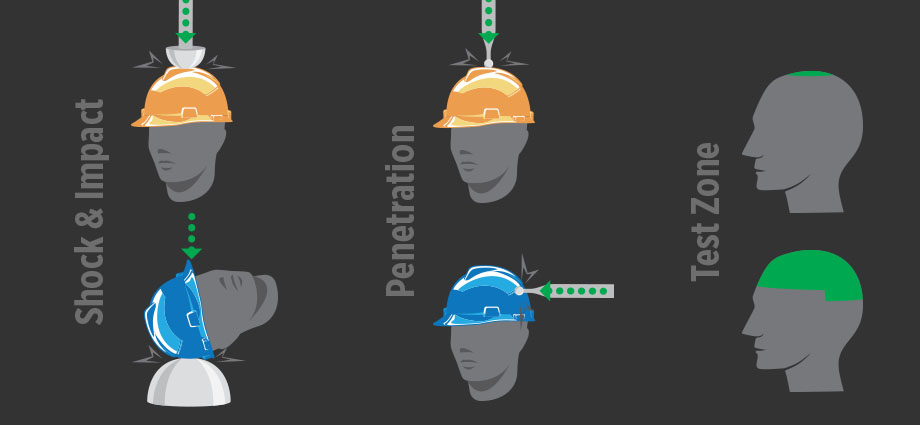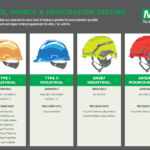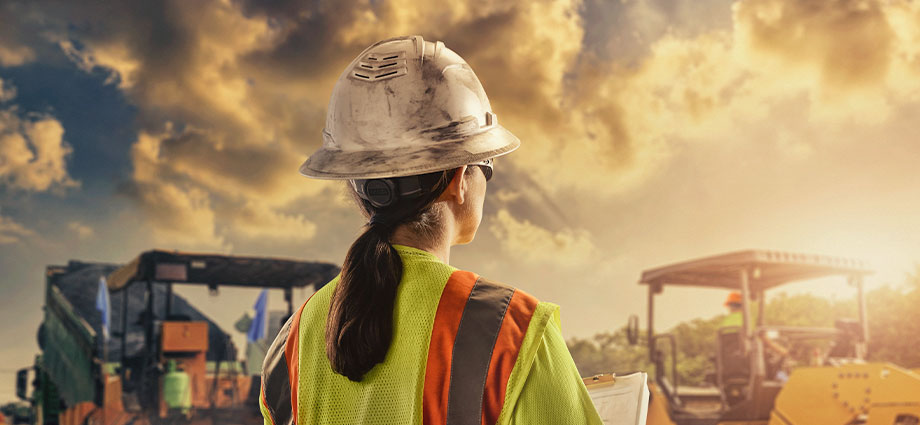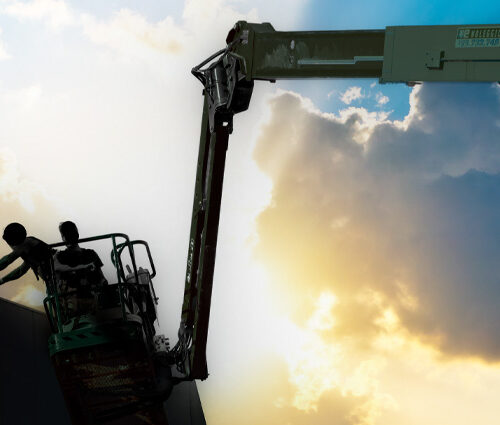
When choosing a hard hat, it’s important to understand the testing each type of hard hat is subject to in order to provide the highest possible level of protection.
OSHA Standards
In the U.S., according to the Occupational Health & Safety Administration (OSHA) standard number 1926.100(a), employees must be protected by protective helmets when “working in areas where there is a possible danger of head injury from impact, or from falling or flying objects.”[1]
In addition, “the employer must provide each employee with head protection that meets the specifications contained in any of the following consensus standards,” noting American National Standards Institute (ANSI) “American National Standard for Industrial Head Protection.”[2]
ANSI Z89.1-2014 R2019 “describes Types and Classes, testing and performance requirements for protective helmets. These include recommended safety requirements for authorities considering the establishment of regulations or codes concerning the use of protective helmets.”[3]

Download the infographic to share with your team!
Download the InfographicCSA Group Standards
In Canada, Canadian Standards Association (CSA Group) has established CSA Z94.1-15 (the “Standard”). The Standard defines the areas of the head that are to be protected and includes basic performance requirements for dielectric strength, impact attenuation, penetration resistance, passive retention (stability), shell flammability, and liner ignition resistance.
The Standard includes requirements for and provides guidance on the selection, care, and use of protective headwear. Additionally, tests specified in the Standard set minimum performance requirements for protective headwear.[4]
Hard Hat Performance Requirements
Industrial hard hats are subjected to many types of testing to help ensure the best protection possible is provided for a wide variety of applications. ANSI, CSA Group, and European Standards (EN) each have different shock and impact testing requirements for hard hats.
Download the infographic above to learn more about the shock, impact, and penetration requirements for Type I and Type II Industrial, EN397 Industrial, and EN12492 Mountaineering hard hats.
Sources:
[1] https://www.osha.gov/laws-regs/regulations/standardnumber/1926/1926.100
[2] https://www.osha.gov/laws-regs/regulations/standardnumber/1926/1926.100
[3] https://webstore.ansi.org/Standards/ISEA/ANSIISEAZ892014R2019






